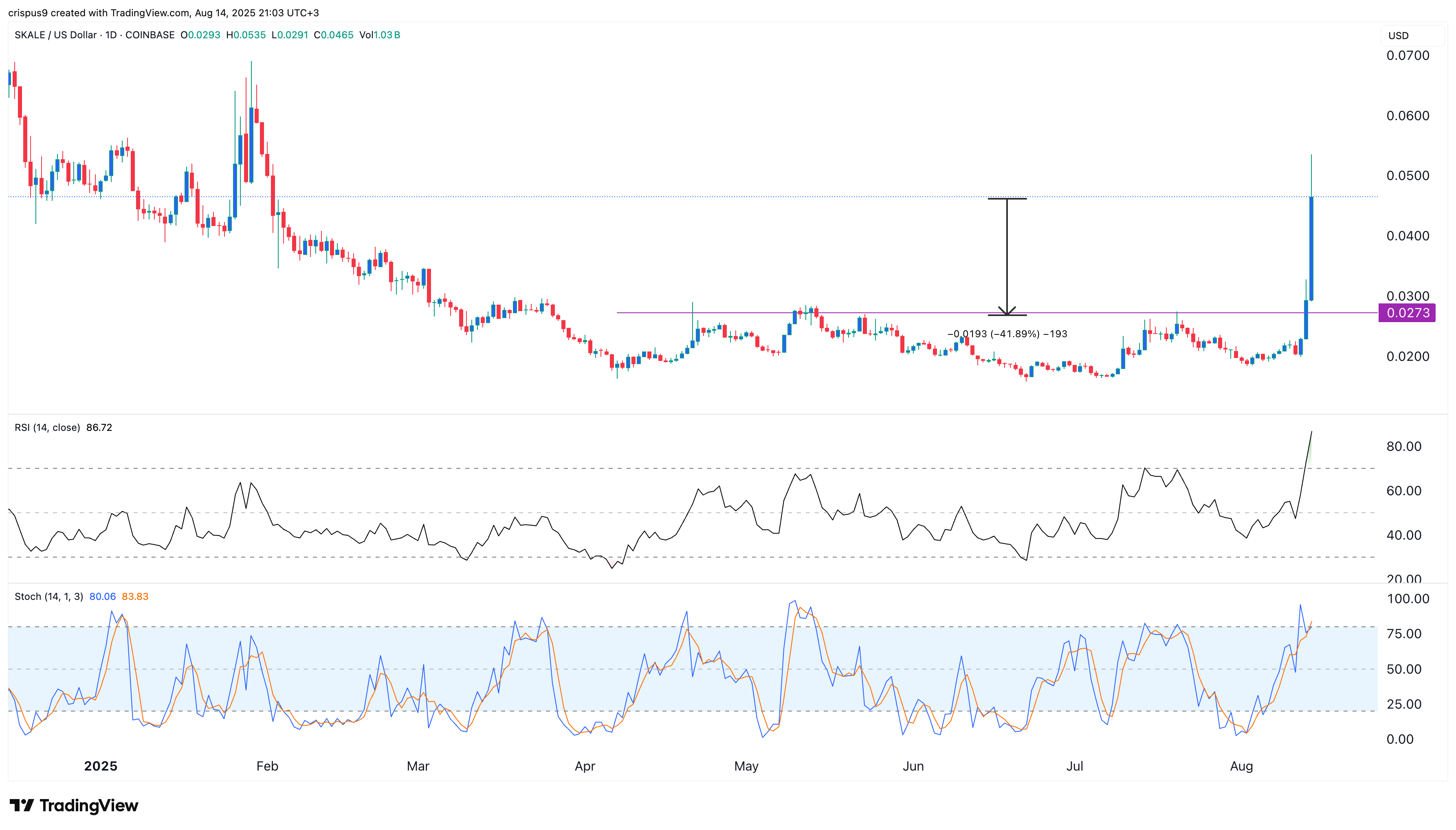Here’s why the surging Skale crypto may crash 40% soon
Skale crypto price surged this week, reaching its highest level since February 1 after It Remains launched on its network.
- Skale crypto price surged this week after the It Remains integration.
- SKL has become highly overbought, pointing to a 40% plunge.
Skale (SKL) token moved from a consolidation phase and surged by 170%, making it one of the best-performing coins this week. The surge happened in a high-volume environment, with its 24-hour figure rising to $780 million, surpassing its market capitalization of $280 million.
SKL price soared after It Remains, a popular Hollywood-level game launched on its network to take advantage of its gas-free transaction costs and fast speed. This launch will solidify Skale as one of the biggest chains in the crypto industry.
Data compiled by DappRadar shows that Skale has 129 games in its ecosystem. It had over 3.9 million unique active wallets in the last 30 days, a 23% increase. It also handled over 107 million transactions, higher than other top gaming chains like Sei and BSC.
Why Skale crypto price may crash
There are three main reasons why the soaring Skale may crash in the near term. First, sentiment in the crypto market has changed, with Bitcoin (BTC) and other top altcoins nosediving. The decline happened as liquidation jumped after the US published strong producer inflation data. A tumbling market often affects some of the best performers.
Second, SKL price will crash as the It Remains hype fades. In most cases, cryptocurrencies and stocks jump after a major event and then pull back as investors sell the news and look forward to the next big thing.
Third, technicals suggest that the price has become highly overbought. The Relative Strength Index jumped to the extreme overbought point at 86, while the Stochastic Oscillator moved to 83. A highly overbought asset tends to pull back as it loses momentum.

Similarly, as the chart above shows, the token has moved higher than the 50-day and 100-day moving averages. As such, it could have a mean reversion, where it drops to get closer to these averages. If this happens, the potential target will be $0.027, its highest point in July and May, down by 40% from the current level.
You May Also Like

Understanding the Ethereum Interoperability Layer (EIL): Bridging L2 Fragmentation and Building a Seamless Cross-Chain Experience

The whale "66kETHBorrow" purchased another 7,837 ETH, bringing its total holdings to 440,500 ETH.
